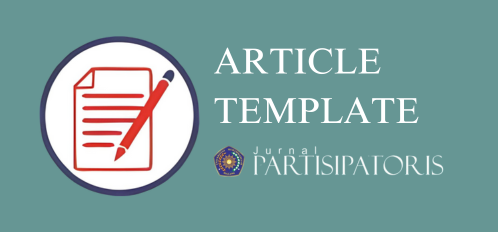Social Design Thinking: an Introduction
DOI:
https://doi.org/10.22219/jp.v5i1.25247Abstract
In today's digital age, there are many complicated social issues that need to be solved, and design thinking is certainly the most effective approach. This essay aims to elucidate the notion of design thinking, which is influenced by the demands of modern society. The major objective of design thinking is to steer clear of ideal answers and develop the best possible solutions for society. Not necessarily what is beneficial for society will be ideal. Empathy is therefore a necessary component of every social design thought process. The core building blocks of social design thinking are the five stages of information gathering, problem analysis, concept generation, prototype modeling, and critical evaluation. In order to offer the greatest potential answers, empathy must be employed at every stage. Because the main goal of social design thinking is to create sustainable, human-centered solutions.
Downloads
References
Dym, C. L., Agogino, A. M., Eris, O., Frey, D. D., & Leifer, L. J. (2006). Engineering design thinking, teach-ing, and learning. IEEE Engineering Management Review, 34(1). https://doi.org/10.1109/emr.2006.1679078
Ericson, J. D. (2022). Mapping the Rela-tionship Between Critical Thinking and Design Thinking. Journal of the Knowledge Economy, 13(1). https://doi.org/10.1007/s13132-021-00733-w
Jamal, T., Kircher, J., & Donaldson, J. P. (2021). Re-visiting design thinking for learning and practice: Critical pedagogy, conative empathy. Sus-tainability (Switzerland), 13(2). https://doi.org/10.3390/su13020964
Klenner, N. F., Gemser, G., & Karpen, I. O. (2022). Entrepreneurial ways of designing and designerly ways of entrepreneuring: Exploring the relationship between design thinking and effectuation theory. Journal of Product Innovation Management, 39(1). https://doi.org/10.1111/jpim.12587
Latorre-Cosculluela, C., Vázquez-Toledo, S., Rodríguez-Martínez, A., & Liesa-Orús, M. (2020). Design Thinking: Creativity and Critical Thinking in College. Revista Elec-tronica de Investigacion Educativa, 22. https://doi.org/10.24320/REDIE.2020.22.E28.2917
Sándorová, Z., Repáňová, T., Palenčíková, Z., & Beták, N. (2020). Design thinking - A revolutionary new ap-proach in tourism education? Jour-nal of Hospitality, Leisure, Sport and Tourism Education, 26. https://doi.org/10.1016/j.jhlste.2019.100238
Törnroth, S., Wikberg Nilsson, Å., & Lu-ciani, A. (2022). Design thinking for the everyday aestheticisation of urban renewable energy. Design Studies, 79. https://doi.org/10.1016/j.destud.2022.101096
Vallis, C., & Redmond, P. (2021). Intro-ducing design thinking online to large business education courses for twenty-first century learning. Journal of University Teaching and Learning Practice, 18(6). https://doi.org/10.53761/1.18.6.14
Wrigley, C., Mosely, G., & Mosely, M. (2021). Defining Military Design Thinking: An Extensive, Critical Literature Review. She Ji, 7(1). https://doi.org/10.1016/j.sheji.2020.12.002
Downloads
Published
How to Cite
Issue
Section
License

This work is licensed under a Creative Commons Attribution-ShareAlike 4.0 International License.
Authors who publish with Jurnal Partisipatoris agree to the following terms:
- For all articles published in the Jurnal partisipatoris, copyright is retained by the authors. Authors give permission to the publisher to announce the work with conditions. When the manuscript is accepted for publication, the authors agree to the automatic transfer of non-exclusive publishing rights to the publisher.
- Authors retain copyright and grant the journal right of first publication with the work simultaneously licensed under a Creative Commons Attribution-ShareAlike 4.0 International License that allows others to share the work with an acknowledgment of the work's authorship and initial publication in this journal.
- Authors are able to enter into separate, additional contractual arrangements for the non-exclusive distribution of the journal's published version of the work (e.g., post it to an institutional repository or publish it in a book), with an acknowledgment of its initial publication in this journal.
- Authors are permitted and encouraged to post their work online (e.g., in institutional repositories or on their website) prior to and during the submission process, as it can lead to productive exchanges, as well as earlier and greater citation of published work (See The Effect of Open Access).











